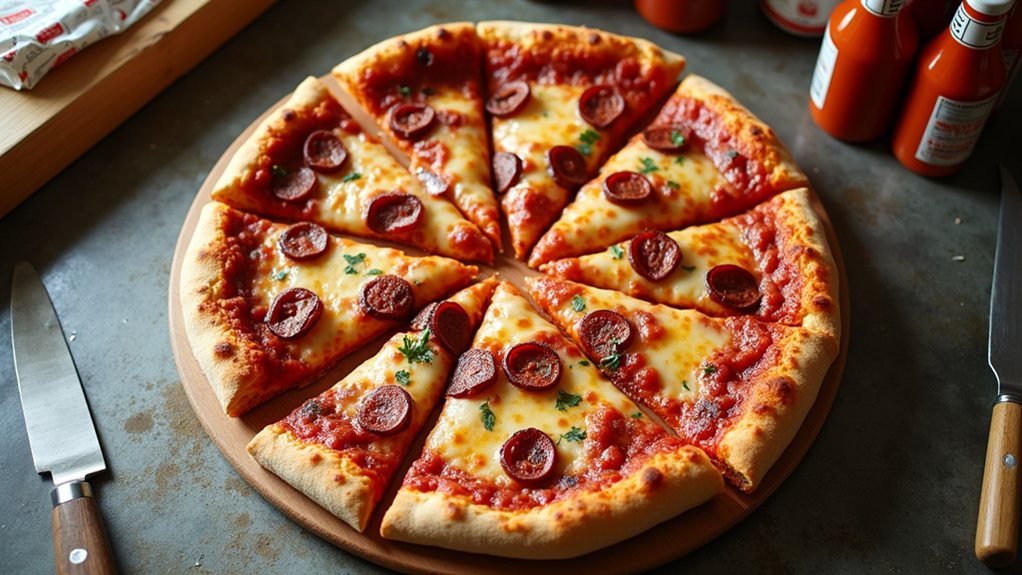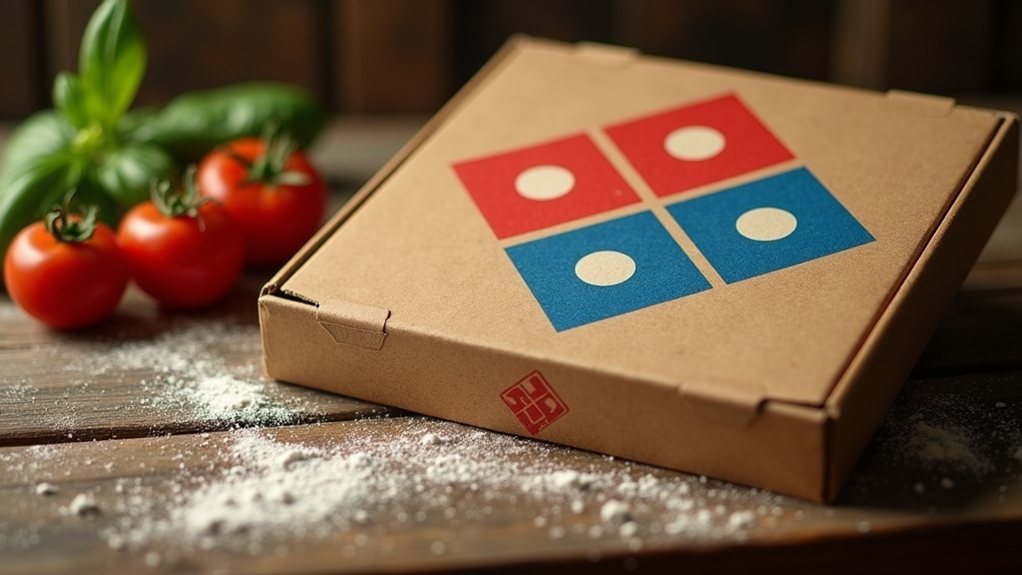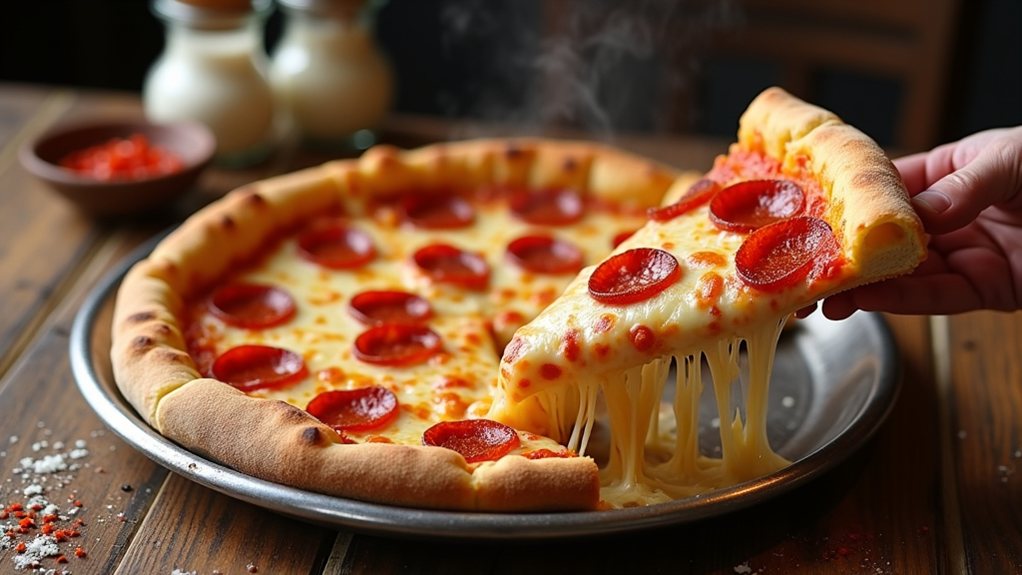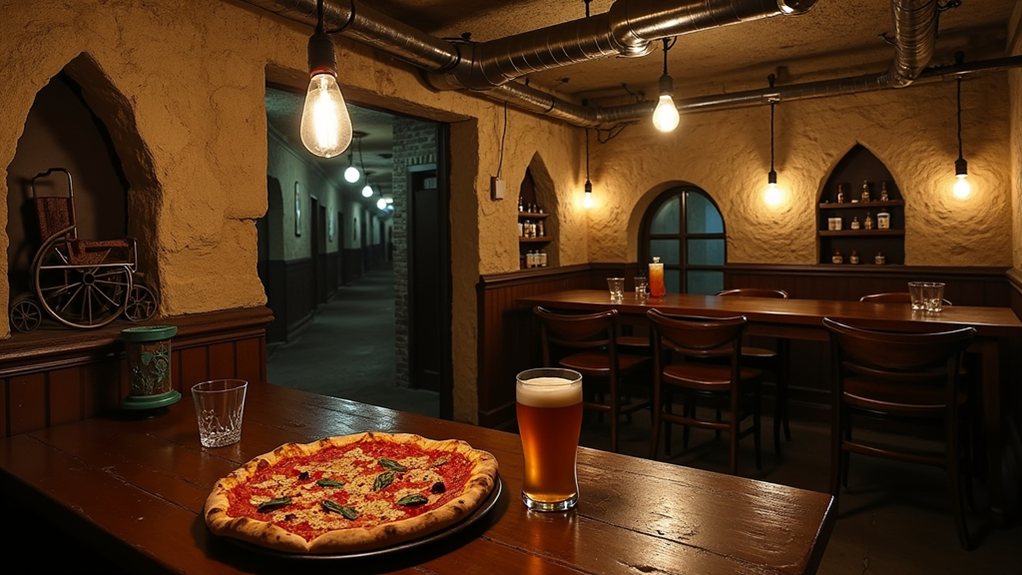I’ve uncovered that making delicious gluten-free pizza doesn’t require compromising on taste or texture, despite what many believe. My expedition to perfect this alternative began when my sister was diagnosed with celiac disease, forcing me to reimagine our Friday pizza nights. The secret lies in the precise ratio of quality gluten-free flour to warm water, creating a dough that rises beautifully and bakes to a golden crisp. Want to know how I can achieve that authentic pizzeria flavor without gluten?
The Secret to Perfect Gluten-Free Pizza Dough
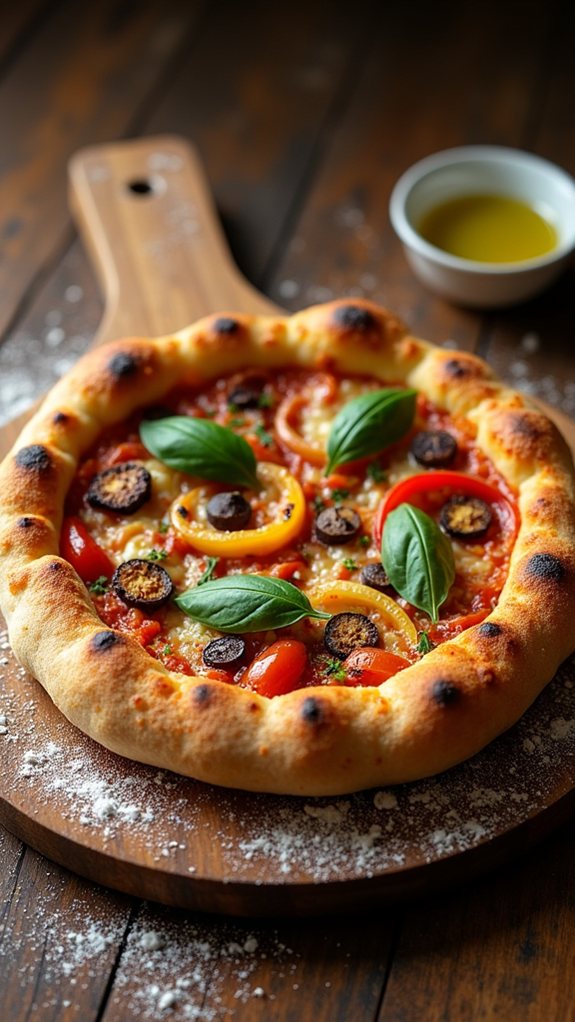
When I first started experimenting with gluten-free pizza dough, I quickly discovered that the secret lies in using the right ingredient proportions and technique.
The magic formula I’ve perfected uses 360g of gluten-free flour combined with 220g of warm water, 7g of instant yeast, and 15g of olive oil for elasticity.
Unlike traditional dough, you’ll notice gluten-free dough forms a drier, pebble-like mixture at the beginning.
Don’t panic! Use a wet hand to knead briefly for 30-60 seconds until it forms a coherent ball.
The 90-minute rise is non-negotiable—it’s crucial for developing a flavor that rivals wheat-based alternatives.
These techniques ensure you can enjoy dietary restrictions without compromising on the authentic pizza taste and texture.
Essential Ingredients for Authentic Flavor
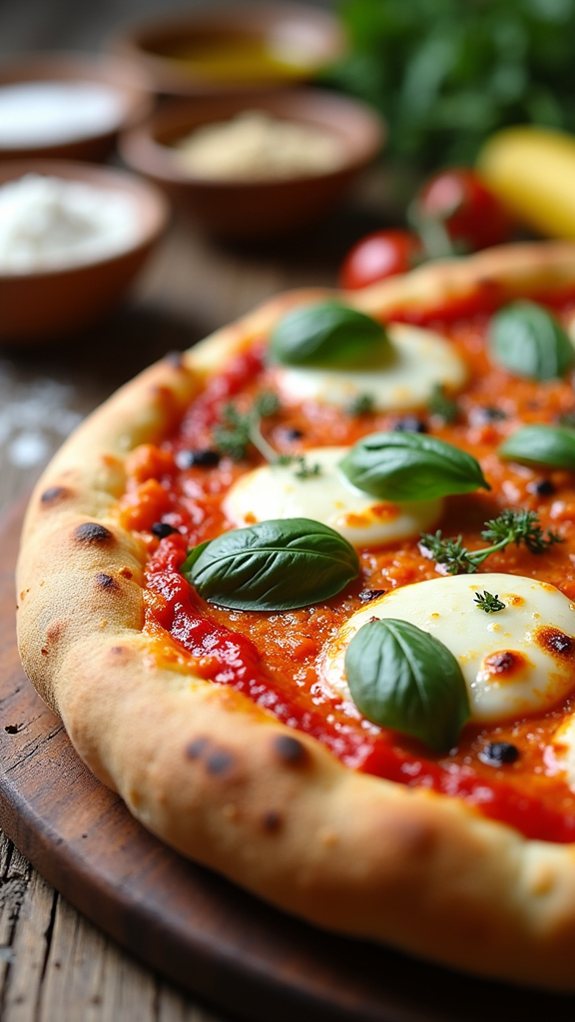
Although creating gluten-free pizza dough is challenging, selecting the right ingredients for authentic flavor is just as essential.
I’ve found that the right combination of ingredients makes all the difference between a mediocre pizza and one that rivals traditional wheat-based versions.
For truly authentic gluten-free pizza flavor, focus on:
- Quality gluten-free flour blend (360g) combined with proper leavening agents (7g yeast, 3g baking soda)
- The perfect sauce ratio using crushed tomatoes, tomato paste, and balanced seasonings
- Strategic cheese selection, mixing both shredded mozzarella and fresh mozzarella in small pieces
These ingredients create a flavor profile that’ll make you forget you’re eating gluten-free!
Combining different types of alternative flours can create better texture and depth of flavor in your gluten-free pizza crust.
Mastering the Kneading and Rising Process
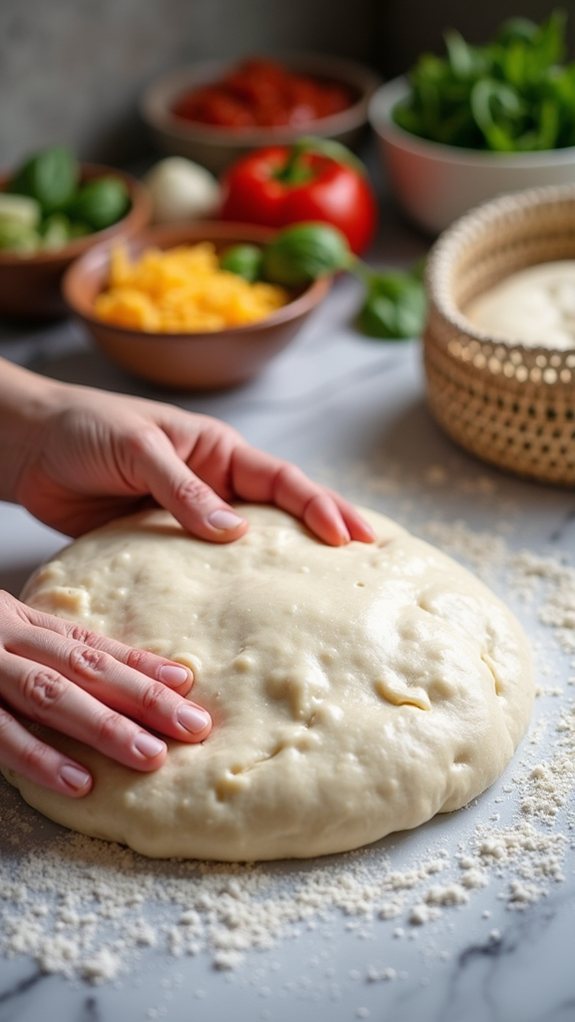
The ingredients set the stage, but the magic of gluten-free pizza happens in how you handle the dough. Unlike traditional pizza, you’ll want to mix your ingredients until they form a somewhat dry, pebbly mixture that might look wrong at an initial glance.
When kneading, I’ve found that using slightly wet hands works wonders – just 30-60 seconds is enough to fuse everything into a cohesive ball.
Don’t overwork it! Then, let your dough rise and be covered for a full 90 minutes, which develops flavor without the gluten network that normally traps gas bubbles.
Unlike whole wheat dough, which benefits from a lower glycemic index and requires longer kneading times of around 10 minutes, the gluten-free dough needs minimal handling.
Creating the Ideal Pizza Base Shape
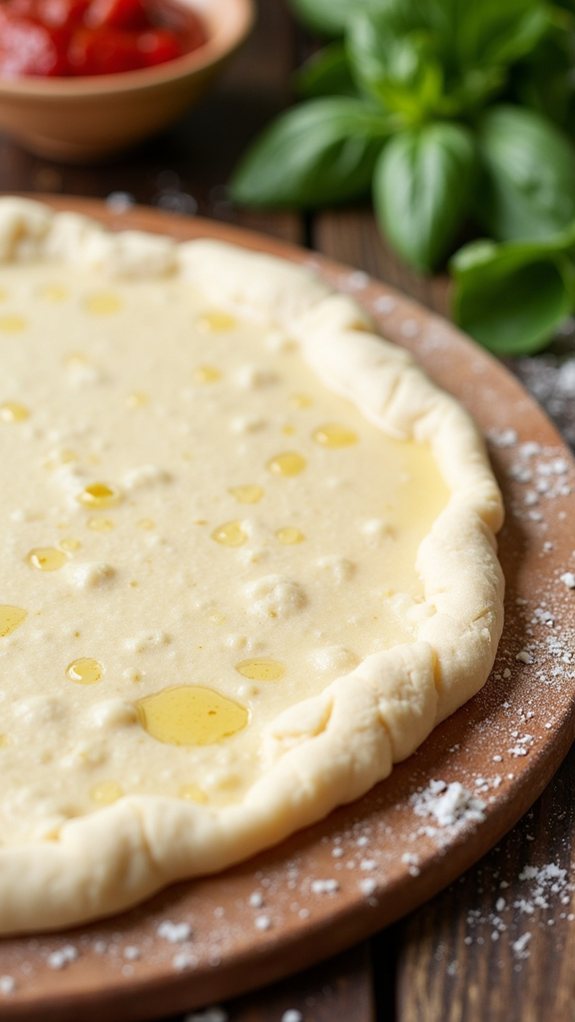
Shaping your gluten-free pizza base correctly is perhaps the most crucial step for achieving that authentic pizzeria look and texture.
I’ve found that working with gluten-free dough requires a slightly different approach than traditional pizza dough, but the results can be just as impressive.
- Use parchment paper to prevent sticking and make transfer easier
- Create an even thickness by rotating the dough while pressing with a rolling pin
- Form a raised edge with a dull knife to contain your toppings
The key is patience—divide your dough into 300g balls and flatten it into an 8-inch round before expanding to your desired size.
Sauce Preparation and Flavor Building
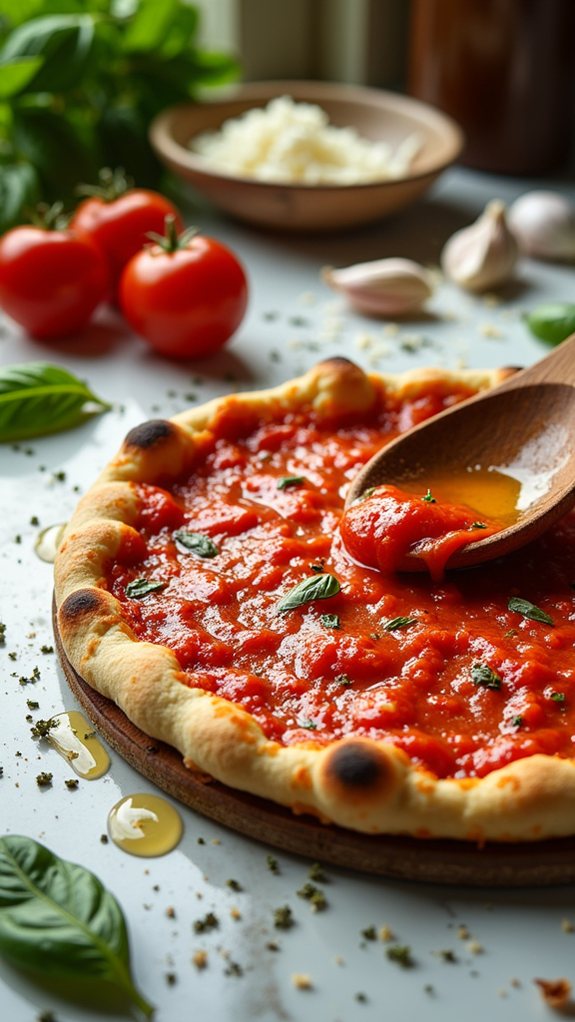
Creating perfect pizza sauce remains one of my favorite parts of the entire gluten-free pizza-making process. A well-balanced sauce can elevate your creation from good to exceptional.
I start with a 28-ounce can of crushed tomatoes as my base, then build flavor with a careful balance of salt, sugar, and herbs.
The secret is adding 100 grams of tomato paste for richness, plus measured amounts of garlic powder, onion powder, dried basil, and oregano.
After blending with an immersion blender for about 30 moments, you’ll have enough sauce for several pizzas, ready to transform your gluten-free crusts.
Cheese Selection and Application Techniques
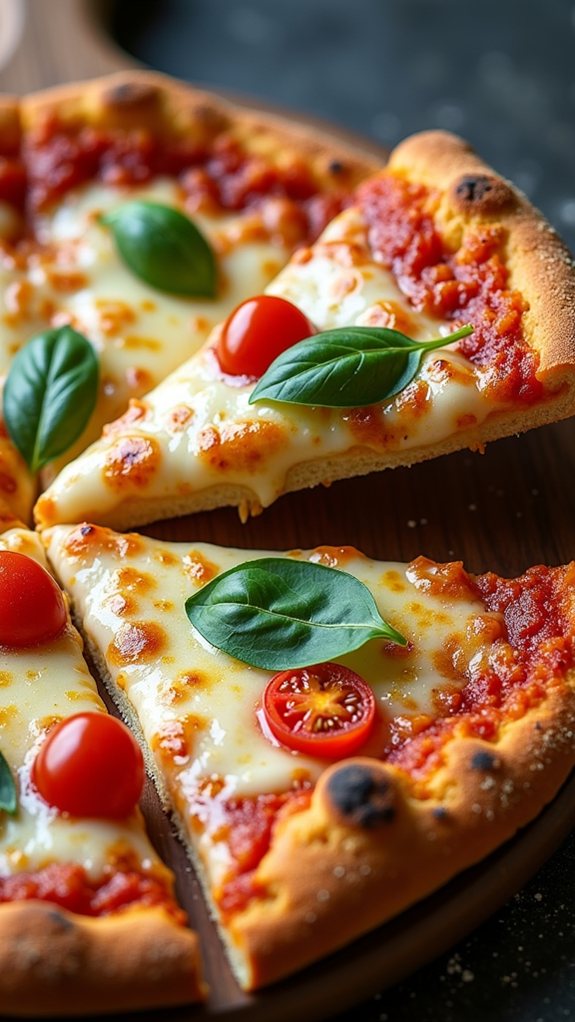
Selecting perfect cheese combinations stands as the fourth critical component of crafting exceptional gluten-free pizza at home.
I’ve found that strategic cheese layering creates that authentic, stretchy pizza experience we all crave. After preparing your sauce, it’s time to focus on cheese selection.
- Grate your mozzarella from blocks instead of using pre-shredded varieties with cellulose, which affects melting.
- Combine aged mozzarella (shredded) with fresh mozzarella (torn into half-inch pieces) for textural contrast.
- Use approximately one pound of cheese total for two 12-inch pizzas, adjusting to your preference.
Baking Methods for a Crispy Golden Crust

The baking process makes all the difference between a soggy disappointment and a crispy, golden masterpiece when working with gluten-free pizza dough.
I’ve found that preheating your oven to 550°F with pizza steel on the middle rack creates the ideal environment for perfect crust development.
After your initial 7-minute bake, don’t rush to serve! Instead, let the pizza cool briefly on a wire rack, then return it directly to the pizza steel for an additional 2 minutes.
This two-stage approach allows the crust to crisp beautifully, developing those authentic dark spots that anyone, gluten-free or not, will appreciate.
FAQs
Can Gluten-Free Pizza Dough Be Frozen for Later Use?
Yes, I freeze my gluten-free pizza dough regularly. After dividing it into portions, I wrap each ball tightly in plastic wrap and foil. I then thaw it overnight in the refrigerator before using it.
How Can I Avoid a Soggy Middle in Gluten-Free Pizza?
I perforate my dough to prevent steam buildup, pre-bake the crust for a few minutes before adding toppings, and don’t overload with sauce. Pizza steel helps tremendously.
What Are the Best Flour Brands for Gluten-Free Pizza?
I’ve had success with Bob’s Red Mill, Cup4Cup, and Caputo Fioreglut for gluten-free pizza. King Arthur’s blend also works well for a crispy crust that doesn’t get soggy.
Is Yeast Necessary in Gluten-Free Pizza Dough?
Yes, I use yeast in my gluten-free pizza dough for proper rise and flavor development. You can substitute with baking powder, but you’ll miss that authentic pizza taste and texture.
Can I Prepare Gluten-Free Dough Without Dairy Ingredients?
Yes, I can make dairy-free, gluten-free pizza dough! The recipe I shared uses water, yeast, flour, olive oil, sugar, salt, and baking soda—no dairy ingredients are needed at all.

